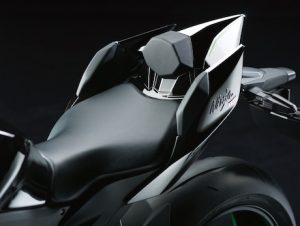After much media hype and no fewer than 23 online video teasers, the Kawasaki Ninja H2 has finally been revealed in Milan.
A press information pack was express-posted to motorcycle journalists around the world ahead of the unveiling so we could deliver as much information as possible.
But the most important information is in the tech specs: It will have 147.2kW (200ps/197hp) at 11,000rpm and 133.5Nm at 10,5000rpm, but the supercharger will boost that to 154.5kW (210ps/207hp) and 140.4Nm.
Some 18 hours earlier, the Ducati 1299 Panigale was unveiled with 152kW (205hp) at 10,500rpm and 144.6Nm at 8750rpm. Just a few hours after that, the Yamaha R1 was unveiled with “about 200hp”. There is no official power figure yet. MV Agusta also entered the power game with the limited edition F4 SBK (customer version) with 154kW (210ps/207hp).
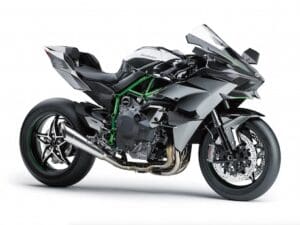
The track-only Ninja H2R was released last month at the Intermot show in Cologne but with no official power figures. Kawasaki has now revealed power to be a stonking 228kW (310ps/305hp) at 14,000rpm and 165Nm of torque at 12,500rpm. But with maximum ram air, power literally blows out to 240kW (326ps/321hp).
The blown street-legal Ninja H2 may have a narrow margin in the power stakes, but it’s the porker of the pack at 238kg wet compared with the 166.5kg dry weight of the Ducati, 175kg for the MV and 199kg for the Yamaha.
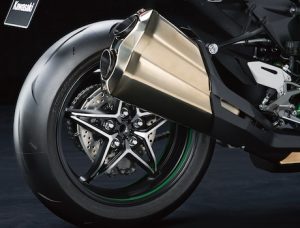
The Ninja H2 transmits that power through a dog-ring transmission as found in MotoGP and F1 racers with a Brembo hydraulic clutch and an adjustable back-torque limiter to prevent wheel lock-ups on quick downshifts.
Most of the information about the solo-seat Ninja H2 has already been released in the weeks leading up to the official unveiling.
It has wind-tunnel-tested aero, all-LED lights, high-speed tyres, massive Brembo brakes, fully adjustable KYB suspension and mirror-finish black chrome paint adapted for mass production for the first time.
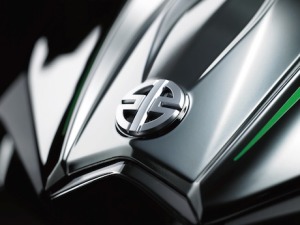
The Ninja H2 also returns the traditional Kawasaki River Mark emblem reserved for models of historical significance.
The Ninja H2 comes with a host of hi-tech and mostly adjustable rider aids: KTRC (Kawasaki TRaction Control), KLCM (Kawasaki Launch Control Mode), KEBC (Kawasaki Engine Brake Control), KIBS (Kawasaki Intelligent anti-lock Brake System) based on the ZX-10R, KQS (Kawasaki Quick Shifter) and an Öhlins Electronic Steering Damper.
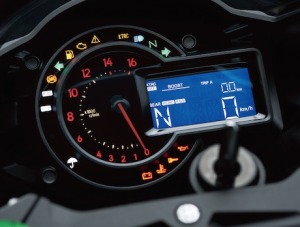
There is no word yet on when it will arrive in Australia or how much it will cost, but, like the new hi-tech R1, it will be more than the current $20,000-ish batch of litre sportsbikes.
Kawasaki Ninja H2 (ZX1000N)
Price: TBA
- Engine: liquid-cooled, 4-valve, 998cc, DOHC, in-line, 4-cylinder
- Bore and stroke: 76x55mm
- Compression: 8.5:1
- Fuel system: EFI 50mmx4 with dual injection
- Intake: Kawasaki supercharger
- Lubrication: forced, wet sump with oil cooler
- Transmission: 6-speed, return, dog-ring, wet multi-disc clutch, chain drive
- Primary reduction ratio: 1.551 (76/49)
- Ratios 1st: 3.188 (51/16)
- 2nd: 2.526 (48/19)
- 3rd: 2.045 (45/22)
- 4th: 1.727 (38/22)
- 5th: 1.524 (32/21)
- 6th: 1.348 (31/23)
- Finale reduction: 2.444 (44/18)
- Length: 2085mm
- Width: 770mm
- Height: 1125mm
- Wheelbase: 1455mm
- Clearance: 130mm
- Seat: 825mm
- Wet weight: 238kg
- Fuel tank: 17 litres
- Rake: 24.7 degrees
- Trail: 108mm
- Steering angle: 27 degrees
- Frame: trellis, high-tensile steel with swingers mounting plate
- Wheel travel: 120mm (front), 135mm
- Tyres: 120/70ZR17M/C (58W); 200/55ZR17M/C (78W)
- Suspension: 43mm inverted KYB forks with rebound and compression damping, spring preload adjustability and top-out springs; Uni-Trak with gas-charged KYB shock, piggyback reservoir, dual-range (high/low-speed) compression damping, rebound damping and preload adjustability, and top-out spring
- Brakes: Dual semi-floating 330mm discs, dual radial-mount callipers, opposed 4-piston (front); 250mm disc, opposed 2-piston calliper


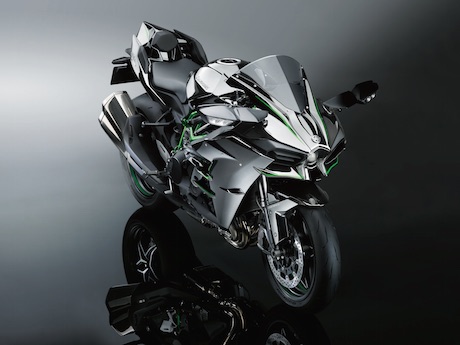
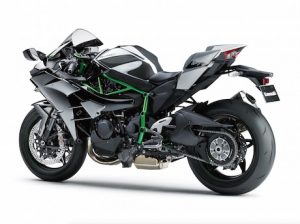
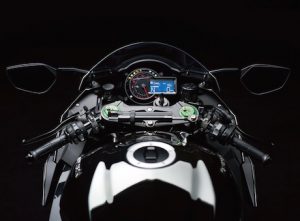 Price: TBA
Price: TBA